IoT Sensor Challenges for Geothermal Energy Installations Monitoring: A Survey
Abstract
1. Introduction
- A comprehensive analysis of methods for monitoring specific parameters in underground geothermal structures and the currently available monitoring technologies and sensors;
- A description of the state-of-the-art IoT technologies and sensors suitable for deployment in underground geothermal structures, including sensor node designs, energy harvesting methods, communication interfaces and cloud services;
- Proposals for new, promising application areas and innovations in technology for monitoring underground geothermal structures.
2. Sensor Technologies
2.1. Temperature Measurement
2.1.1. Static Installations
2.1.2. Mobile Sensing
2.2. Flow Rate Measurement
2.2.1. Ultrasonic Meter
2.2.2. Calorimeter
2.2.3. Sharp-Edged Orifice Plate
2.2.4. Tracer Dilution Method
2.2.5. Lip Pressure Method
2.2.6. Venturi Tube
2.2.7. Coriolis Flow Meter
2.2.8. Compression Load Cells
2.2.9. Separator with Orifice Plate and Silencer
2.3. Measurement of Mechanical Parameters
2.3.1. Optical Sensors
2.3.2. Vibrating Wire Sensors
2.3.3. Tilt Sensors
3. IoT Devices and Cloud Processing
3.1. IoT Nodes
3.2. Data Transmission Technologies
3.2.1. LoRaWAN
- Class A—End devices can start transmission (uplink) at any time, while the base station transmits data only for a short time once the uplink is complete. Each uplink time slot is followed by two downlink slots, after which the receiver switches off. This class has the lowest energy demand.
- Class B—Devices have the same uplink and downlink slots as Class A, plus one extra downlink slot. The end-device receiver is switched on for this extra slot according to a predetermined schedule. The base station is programmed to follow this schedule.
- Class C—Receivers can listen continuously, except in transmit mode. This class of device is ideal for applications that require many downlink transmissions because the base station broadcasts at any time. Its disadvantage is higher power consumption [87].
3.2.2. Sigfox
3.2.3. NB-IoT
- Stand-alone operation—When using this mode, NB-IoT is the exclusive user of the selected frequency band.
- Guard-band operation—In this mode, NB-IoT data are transmitted through an unused frequency band next to, or between, LTE bands (the so-called guard band).
3.2.4. Comparison of LPWANs
3.3. Cloud Services
- On Premises (Private Cloud)—This cloud model is in fact not a genuine cloud service. It is suitable for users who require data protection and security and are willing to pay more for the service. Because data and all infrastructure, including software and hardware, are on the premises, the system is managed by the user’s own IT team. In-house maintenance requirements and fixed scalability mean that this type of deployment is the most expensive.
- Infrastructure as a Service (IaaS)—IaaS allows customers to outsource equipment such as storage, servers and network resources. The remainder of the stack is managed by the customer. The disadvantage of IaaS is the potential for vendor outages and the cost of training personnel to manage new infrastructure.
- Platform as a Service (PaaS)—The provider manages everything as in IaaS but is also responsible for the base software and operating system, middleware and database. The drawback of PaaS is potential security problems and greater dependency on the vendor.
3.4. Edge Computing
3.5. IoT in Geothermal Applications
- Ensure reliable operation: To ensure reliable operation of IoT devices in geothermal installations, it is essential to choose devices that are designed to withstand the harsh environmental conditions of the installation. This includes selecting devices that are rated for high temperatures, humidity, and corrosion resistance. Additionally, regular maintenance and calibration of the devices can help ensure reliable operation [117].
- Prevent malfunctions due to exceeding recommended temperature ranges: IoT devices can malfunction if they are exposed to temperatures outside their recommended range. To prevent this, it is essential to monitor the temperature of the devices and the surrounding environment and take appropriate measures to prevent overheating. This can include installing cooling systems or using devices with built-in temperature sensors and automatic shut-off features.
- Minimize the generation of erroneous data: IoT devices can generate erroneous data due to factors such as sensor drift, signal interference, and data loss. To minimize this, it is essential to use high-quality sensors and ensure that the devices are properly calibrated and maintained [118]. Additionally, data validation and error correction algorithms can be used to identify and correct erroneous data.
- Transition from elementary sensors to more complex MCU-based IoT devices: The transition from elementary sensors to more complex MCU-based IoT devices can bring several implications, including increased complexity, higher costs, and the need for specialized expertise. To address these challenges, it is essential to carefully evaluate the benefits and drawbacks of using MCU-based IoT devices and ensure that the devices are properly designed, installed, and maintained. Additionally, training and support for personnel responsible for operating and maintaining the devices can help ensure their reliable operation.
4. Research Challenges
4.1. New Potential Applications
4.2. Technological Innovations
5. Conclusions
Author Contributions
Funding
Institutional Review Board Statement
Informed Consent Statement
Data Availability Statement
Conflicts of Interest
References
- Mubarok, M.H.; Zarrouk, S.J.; Cater, J.E. Two-phase flow measurement of geothermal fluid using orifice plate: Field testing and CFD validation. Renew. Energy 2019, 134, 927–946. [Google Scholar] [CrossRef]
- Helbig, S.; Zarrouk, S.J. Measuring two-phase flow in geothermal pipelines using sharp edge orifice plates. Geothermics 2012, 44, 52–64. [Google Scholar] [CrossRef]
- Okazaki, T.; Seto, R.; Watanabe, T.; Ueda, A.; Kuramitz, H. U-Shaped Polymer Cladding and Hetero-Core Fiber Optic Sensors for Monitoring Scale Formation in Geothermal Brine. Anal. Lett. 2020, 53, 2160–2169. [Google Scholar] [CrossRef]
- Yadav, D.K.; Jayanthu, S.; Das, S.K.; Chinara, S.; Mishra, P. Critical review on slope monitoring systems with a vision of unifying WSN and IoT. IET Wirel. Sens. Syst. 2019, 9, 167–180. [Google Scholar] [CrossRef]
- Bense, V.; Read, T.; Bour, O.; Le Borgne, T.; Coleman, T.; Krause, S.; Chalari, A.; Mondanos, M.; Ciocca, F.; Selker, J. Distributed Temperature S ensing as a downhole tool in hydrogeology. Water Resour. Res. 2016, 52, 9259–9273. [Google Scholar] [CrossRef]
- Challener, W.; Palit, S.; Jones, R.; Airey, L.; Craddock, R.; Knobloch, A. MOEMS pressure sensors for geothermal well monitoring. In Proceedings of the MOEMS and Miniaturized Systems XII, San Francisco, CA, USA, 2–7 February 2013. [Google Scholar]
- Ali, H.; Choi, J.H. A review of underground pipeline leakage and sinkhole monitoring methods based on wireless sensor networking. Sustainability 2019, 11, 4007. [Google Scholar] [CrossRef]
- Kim, J.W.; Lee, C.; Park, S. Real-time health monitoring of pipeline structures using piezoelectric guided wave propagation. Adv. Sci. Lett. 2011, 4, 696–701. [Google Scholar] [CrossRef]
- Muduli, L.; Mishra, D.P.; Jana, P.K. Application of wireless sensor network for environmental monitoring in underground coal mines: A systematic review. J. Netw. Comput. Appl. 2018, 106, 48–67. [Google Scholar] [CrossRef]
- Grimsley, R.; Marineau, M.; Iannucci, B. Experiences in LP-IoT: EnviSense Deployment of Remotely Reprogrammable Environmental Sensors. In Proceedings of the 1st ACM Workshop on No Power and Low Power Internet-of-Things, New Orleans, LA, USA, 31 January–4 February 2022; pp. 1–7. [Google Scholar]
- Adhya, S.; Saha, D.; Das, A.; Jana, J.; Saha, H. An IoT based smart solar photovoltaic remote monitoring and control unit. In Proceedings of the 2nd International Conference on Control, Instrumentation, Energy and Communication, CIEC 2016, Kolkata, India, 28–30 January 2016; IEEE: Piscataway, NJ, USA, 2016; pp. 432–436. [Google Scholar]
- Hossain, M.I.; Markendahl, J.I. Comparison of LPWAN Technologies: Cost Structure and Scalability. Wirel. Pers. Commun. 2021, 121, 887–903. [Google Scholar] [CrossRef]
- Aranzabal, N.; Martos, J.; Steger, H.; Blum, P.; Soret, J. Temperature measurements along a vertical borehole heat exchanger: A method comparison. Renew. Energy 2019, 143, 1247–1258. [Google Scholar] [CrossRef]
- Sanjuan, B.; Béchu, E.; Braibant, G.; Lebert, F. High Temperature-High Pressure Rated Sensors and Tools Useful for Geothermal Purposes. Bibliographical Review. 2009, Final Report, BRGM/RP-57342-FR, pp. 44. Available online: http://infoterre.brgm.fr/rapports/RP-57342-FR.pdf (accessed on 2 May 2023).
- Ukil, A.; Braendle, H.; Krippner, P. Distributed temperature sensing: Review of technology and applications. IEEE Sens. J. 2011, 12, 885–892. [Google Scholar] [CrossRef]
- McDaniel, A.; Fratta, D.; Tinjum, J.M.; Hart, D.J. Long-term district-scale geothermal exchange borefield monitoring with fiber optic distributed temperature sensing. Geothermics 2018, 72, 193–204. [Google Scholar] [CrossRef]
- Reinsch, T.; Henninges, J.; Ásmundsson, R. Thermal, mechanical and chemical influences on the performance of optical fibres for distributed temperature sensing in a hot geothermal well. Environ. Earth Sci. 2013, 70, 3465–3480. [Google Scholar] [CrossRef]
- Martos, J.; Montero, Á.; Torres, J.; Soret, J.; Martínez, G.; García-Olcina, R. Novel wireless sensor system for dynamic characterization of borehole heat exchangers. Sensors 2011, 11, 7082–7094. [Google Scholar] [CrossRef]
- Erkan, K.; Akkoyunlu, B.; Balkan, E.; Tayanç, M. A portable borehole temperature logging system using the four-wire resistance method. J. Geophys. Eng. 2017, 14, 1413–1419. [Google Scholar] [CrossRef]
- Becerra, G.; Picazo, M.; Aguilar, J.; Xamán, J.; Osorio, E.; Hernandez, J.; Ledesma-Alonso, R. Experimental study of a geothermal earth-to-air heat exchanger in Chetumal, Quintana Roo, Mexico. Energy Effic. 2022, 15, 20. [Google Scholar] [CrossRef]
- Aranzabal, N.; Radioti, G.; Martos, J.; Soret, J.; Nguyen, F.; Charlier, R. Enhanced thermal response test using fiber optics for a double U-pipe borehole heat exchanger analysed by numerical modeling. In Proceedings of the 29th International Conference on Efficiency, Cost, Optimisation, Simulation and Environmental Impact of Energy Systems, Portoroz, Slovenia, 19–23 June 2016. [Google Scholar]
- Gehlin, S.E.; Hellstrom, G. Comparison of four models for thermal response test evaluation. ASHRAE Trans. 2003, 109, 131. [Google Scholar]
- Ouyang, L.B.; Belanger, D.L. Flow profiling by distributed temperature sensor (DTS) system-expectation and reality. SPE Prod. Oper. 2006, 21, 269–281. [Google Scholar] [CrossRef]
- Patterson, J.R.; Cardiff, M.; Coleman, T.; Wang, H.; Feigl, K.L.; Akerley, J.; Spielman, P. Geothermal reservoir characterization using distributed temperature sensing at Brady Geothermal Field, Nevada. Lead. Edge 2017, 36, 1024a1–1024a7. [Google Scholar] [CrossRef]
- Wu, H.; Feder, K.S.; Stolov, A.A.; Shenk, S.D.; Monberg, E.M.; Simoff, D.A. High-temperature enhanced Rayleigh scattering optical fiber sensor for borehole applications. In Proceedings of the Optical Components and Materials XVII, San Francisco, CA, USA, 1–6 February 2020; Volume 11276, pp. 167–172. [Google Scholar]
- Wu, H.; Stolov, A.A.; Feder, K.S. Optical fiber as distributed acoustic sensing element with improved Rayleigh backscattering sensitivity and robustness under elevated temperature. In Proceedings of the Optical Fibers and Sensors for Medical Diagnostics, Treatment and Environmental Applications XXI, Online, CA, USA, 6–12 March 2021; Volume 11635, pp. 51–57. [Google Scholar]
- Ilko, J.; Rusko, M.; Halper, C.; Majernik, M.; Majernik, S. Flow Measurement on Hot Water Lines at Geothermal Power Plant Using Ultrasonic Method. In Proceedings of the 31st DAAAM International Symposium, Mostar, Bosnia and Herzegovina, 21–24 October 2020; Volume 7. [Google Scholar]
- Chhantyal, K.; Viumdal, H.; Mylvaganam, S.; Elseth, G. Ultrasonic level sensors for flowmetering of non-Newtonian fluids in open Venturi channels: Using data fusion based on Artificial Neural Network and Support Vector Machines. In Proceedings of the 2016 IEEE Sensors Applications Symposium (SAS), Catania, Italy, 20–22 April 2016; IEEE: Piscataway, NJ, USA, 2016; pp. 1–6. [Google Scholar]
- de Zuquim, M.P.S.; Zarrouk, S.J. Nursery greenhouses heated with geothermal energy–A case study from Rotorua New Zealand. Geothermics 2021, 95, 102123. [Google Scholar] [CrossRef]
- Agamata-Lu, C. Chemical Tracer Dilution Test Using Isopropanol, Benzoate and Bromide at the Broadlands-Ohaaki Geothermal Field. Trans.-Geotherm. Resour. Counc. 2000, 24, 549–554. [Google Scholar]
- Mella, M.; Olsen, S.; Rose, P.; Bour, D.; Petty, S.; Harris, J. A Downhole Fluorimeter for Measuring Flow Processes in Geothermal and EGS Wellbores. Geotherm. Resour. Counc. Trans. 2010, 34, 1161–1166. [Google Scholar]
- Sugiharto, M.P.; Marastio, F.E.; Fanani, A.F.; Pasaribu, F.; Silaban, M.; Maulana, D.T.; Saptadji, N.M. The Implementation of Flow Performance Test to Monitor Well Performance in Geothermal Field. Iop Conf. Ser. Earth Environ. Sci. 2021, 732, 012020. [Google Scholar] [CrossRef]
- Ruliandi, D. Geothermal power plant system performance prediction using artificial neural networks. In Proceedings of the 2015 IEEE Conference on Technologies for Sustainability, Ogden, UT, USA, 30 July–1 August 2015; pp. 216–223. [Google Scholar]
- Mubarok, M.H.; Cater, J.E.; Zarrouk, S.J. Comparative CFD modelling of pressure differential flow meters for measuring two-phase geothermal fluid flow. Geothermics 2020, 86, 101801. [Google Scholar] [CrossRef]
- Mubarok, M.H.; Zarrouk, S.J.; Cater, J.E.; Mundakir, A.; Bramantyo, E.A.; Lim, Y.W. Real-time enthalpy measurement of two-phase geothermal fluid flow using load cell sensors: Field testing results. Geothermics 2021, 89, 101930. [Google Scholar] [CrossRef]
- Shen, J. Measurement of Fluid Properties of Two-Phase Fluids Using an Ultrasonic Meter. U.S. Patent 5,115,670, 26 May 1992. [Google Scholar]
- Sanderson, M.; Yeung, H. Guidelines for the use of ultrasonic non-invasive metering techniques. Flow Meas. Instrum. 2002, 13, 125–142. [Google Scholar] [CrossRef]
- Uhlmann, M.; Bertsch, S. Measurement and Simulation of Startup and Shut Down of Heat Pumps. In Proceeding of the International Refrigeration and Air Conditioning Conference, West Lafayette, IN, USA, 12–15 July 2010. [Google Scholar]
- Bixley, P.; Dench, N.; Wilson, D. Development of well testing methods at Wairakei 1950–1980. In Proceedings of the 20th Geothermal Workshop, Auckland, New Zealand, 1998. [Google Scholar]
- Siitonen, H.J. Output tests of shallow Rotorua wells. In Proceedings of the 8th New Zealand Geothermal Workshop, Auckland, New Zealand, 5–7 November 1986; pp. 63–67. [Google Scholar]
- Sanchez-Velasco, R.A.; Canchola-Felix, I. Geothermal Steam Measurement with Orifice Plates, According with the ISO 5167—The Cerro Prieto Case. 2018; ISBN 0-934412-90-1. ISSN 0193-5933. [Google Scholar]
- López, J.; Martínez, A.; Pérez, A.; Medina, A. Geological Results, Drilling and Mass Flow of the Well AZ-89, the Geothermal Field of Los Azufres, Mich. Resultados Geológicos, de Perforación y Produción del Pozo AZ-89, del Campo Geotérmico de los Azufres, Mich. 2018. Available online: https://www.researchgate.net/publication/296708344_Geological_results_drilling_and_mass_flow_of_the_well_AZ-89_the_geothermal_field_of_Los_Azufres_Mich (accessed on 2 May 2023).
- Lovelock, B. Steam flow measurement in two-phase pipelines using volatile organic liquid tracers. In The 19th New Zealand Geothermal Workshop; University of Auckland: Auckland, New Zealand, 1997; pp. 75–80. [Google Scholar]
- Armenta, M. Validation of Hiriart Equation to Compute Steam Production by the Lip Pressure Method; Technical Report; Geothermal Resources Council: Davis, CA, USA, 1997. [Google Scholar]
- Spencer, E. Progress on international standardization of orifice plates for flow measurement. Int. J. Heat Fluid Flow 1982, 3, 59–66. [Google Scholar] [CrossRef]
- O’Banion, T. Coriolis: The direct approach to mass flow measurement. Chem. Eng. Prog. 2013, 109, 41–46. [Google Scholar]
- Sisler, J.R.; Zarrouk, S.J.; Urgel, A.; Lim, Y.W.; Adams, R.; Martin, S. Measurement of two phase flows in geothermal pipelines using load-cells: Field trial results. In Proceedings of the 37th New Zealand Geothermal Workshop, Taupo, New Zealand, 18–20 November 2015; Volume 18, p. 20. [Google Scholar]
- Leven, C.; Barrash, W. Fiber optic pressure measurements open up new experimental possibilities in hydrogeology. Groundwater 2021, 60, 125–136. [Google Scholar] [CrossRef]
- Dresen, G.; Stanchits, S.; Rybacki, E. Borehole breakout evolution through acoustic emission location analysis. Int. J. Rock Mech. Min. Sci. 2010, 47, 426–435. [Google Scholar] [CrossRef]
- Simonetti, A. A measurement technique for the vibrating wire sensors. In Proceedings of the NORCHIP 2012, Copenhagen, Denmark, 12–13 November 2012; IEEE: Piscataway, NJ, USA, 2012; pp. 1–6. [Google Scholar]
- Stevens, L. Pressure, temperature and flow logging in geothermal wells. In Proceedings of the World Geothermal Congress, Kyushu-Tohoku, Japan, 28 May–10 June 2000; pp. 2435–2437. [Google Scholar]
- Doetsch, J.; Gischig, V.S.; Villiger, L.; Krietsch, H.; Nejati, M.; Amann, F.; Jalali, M.; Madonna, C.; Maurer, H.; Wiemer, S.; et al. Subsurface fluid pressure and rock deformation monitoring using seismic velocity observations. Geophys. Res. Lett. 2018, 45, 10–389. [Google Scholar] [CrossRef]
- Becker, M.; Coleman, T.; Ciervo, C.; Cole, M.; Mondanos, M. Fluid pressure sensing with fiber-optic distributed acoustic sensing. Lead. Edge 2017, 36, 1018–1023. [Google Scholar] [CrossRef]
- Liu, H.; Gao, Z.; Shao, L.; Li, J. Design of monitoring system based on vibrating wire sensor. In Proceedings of the 2019 Chinese Control And Decision Conference (CCDC), Nanchang, China, 3–5 June 2019; IEEE: Piscataway, NJ, USA, 2019; pp. 2457–2461. [Google Scholar]
- Putra, A.D.; Toda, H.; Hafidz, A.; Matsuba, K.; Kimikado, Y.; Takahashi, Y.; Tsuzuki, S.; Kinoshita, N.; Yasuhara, H. Development of slope deformation monitoring system based on tilt sensors with low-power wide area network technology and its application. J. Civ. Struct. Health Monit. 2021, 11, 1037–1053. [Google Scholar] [CrossRef]
- Clarivate. Web of Science. Available online: https://www.webofscience.com (accessed on 14 July 2022).
- Papaioannou, P.; Tzanis, N.; Tranoris, C.; Denazis, S.; Birbas, A. A Prototype 5G/IoT Implementation for Transforming a Legacy Facility to a Smart Factory. In Proceedings of the Artificial Intelligence Applications and Innovations. AIAI 2021 IFIP WG 12.5 International Workshops: 5G-PINE 2021, AI-BIO 2021, DAAI 2021, DARE 2021, EEAI 2021, and MHDW 2021, Hersonissos, Crete, Greece, 25–27 June 2021. [Google Scholar]
- Lee, J.; Lee, J.; Jeong, J. Design and Implementation of Injection Data Preprocessing Monitoring System Based on Node-RED. In Proceedings of the International Symposium on Medical Information and Communication Technology, ISMICT, 2021, Xiamen, China, 14–16 April 2021; pp. 19–23. [Google Scholar]
- Ali, A. Framework for Air Pollution Monitoring in Smart Cities by Using IoT and Smart Sensors. ARPN J. Eng. Appl. Sci. 2022, 17, 670–674. [Google Scholar] [CrossRef]
- Jabbar, W.A.; Annathurai, S.; Rahim, T.A.A.; Mohd Fauzi, M.F. Smart energy meter based on a long-range wide-area network for a stand-alone photovoltaic system. Expert Syst. Appl. 2022, 197, 116703. [Google Scholar] [CrossRef]
- Lin, J.Y.; Tsai, H.L.; Lu, G.H. Development of Wireless AC Power-Monitoring Module. In Proceedings of the 8th International Conference on Applied System Innovation, ICASI 2022, Nantou, Taiwan, 22–23 April 2022; pp. 1–4. [Google Scholar]
- Civerchia, F.; Bocchino, S.; Salvadori, C.; Rossi, E.; Maggiani, L.; Petracca, M. Industrial Internet of Things monitoring solution for advanced predictive maintenance applications. J. Ind. Inf. Integr. 2017, 7, 4–12. [Google Scholar] [CrossRef]
- Shim, H.K.; Sun, S.; Kim, H.S.; Lee, D.G.; Lee, Y.J.; Jang, J.S.; Cho, K.H.; Baik, J.M.; Kang, C.Y.; Leng, Y.; et al. On a nonlinear broadband piezoelectric energy harvester with a coupled beam array. Appl. Energy 2022, 328, 120129. [Google Scholar] [CrossRef]
- Elahi, H.; Munir, K.; Eugeni, M.; Atek, S.; Gaudenzi, P. Energy harvesting towards self-powered IoT devices. Energies 2020, 13, 5528. [Google Scholar] [CrossRef]
- Ryan, E.; Kosanovic, D.; McDaniel, B. Application of thermal energy storage with electrified heating and cooling in a cold climate. Appl. Energy 2022, 328, 120147. [Google Scholar] [CrossRef]
- Yazawa, K.; Feng, Y.; Lu, N. Conformal heat energy harvester on Steam4 pipelines for powering IoT sensors. Energy Convers. Manag. 2021, 244, 114487. [Google Scholar] [CrossRef]
- Das, P.; Ghosh, S.; Chatterjee, S.; De, S. A Low Cost Outdoor Air Pollution Monitoring Device With Power Controlled Built-In PM Sensor. IEEE Sens. J. 2022, 22, 13682–13695. [Google Scholar] [CrossRef]
- Wang, P.; Gao, M.; Sun, Y.; Zhang, H.; Liao, Y.; Xie, S. A vibration-powered self-contained node by profiling mechanism and its application in cleaner agricultural production. J. Clean. Prod. 2022, 366, 132897. [Google Scholar] [CrossRef]
- Tran, L.G.; Cha, H.K.; Park, W.T. RF power harvesting: A review on designing methodologies and applications. Micro Nano Syst. Lett. 2017, 5, 14. [Google Scholar] [CrossRef]
- Twaha, S.; Zhu, J.; Yan, Y.; Li, B. A comprehensive review of thermoelectric technology: Materials, applications, modelling and performance improvement. Renew. Sustain. Energy Rev. 2016, 65, 698–726. [Google Scholar] [CrossRef]
- Roy, S.; Kabir, M.H.; Salauddin, M.; Halim, M.A. An Electromagnetic Wind Energy Harvester Based on Rotational Magnet Pole-Pairs for Autonomous IoT Applications. Energies 2022, 15, 5725. [Google Scholar] [CrossRef]
- Sandhu, M.M.; Khalifa, S.; Jurdak, R.; Portmann, M. Task Scheduling for Energy-Harvesting-Based IoT: A Survey and Critical Analysis. IEEE Internet Things J. 2021, 8, 13825–13848. [Google Scholar] [CrossRef]
- Paterova, T.; Prauzek, M.; Konecny, J.; Ozana, S.; Zmij, P.; Stankus, M.; Weise, D.; Pierer, A. Environment-monitoring IoT devices powered by a TEG which converts thermal flux between air and near-surface soil into electrical energy. Sensors 2021, 21, 8098. [Google Scholar] [CrossRef]
- Shukla, S.; Jha, P.K.; Ray, K.C. An energy-efficient single-cycle RV32I microprocessor for edge computing applications. Integration 2023, 88, 233–240. [Google Scholar] [CrossRef]
- Pereira, F.; Correia, R.; Pinho, P.; Lopes, S.I.; Carvalho, N.B. Challenges in resource-constrained iot devices: Energy and communication as critical success factors for future iot deployment. Sensors 2020, 20, 6420. [Google Scholar] [CrossRef]
- NXP Semiconductors Official Site | NXP Semiconductors. Available online: https://www.nxp.com/ (accessed on 15 February 2023).
- Smart|Connected|Secure|Microchip Technology. Available online: https://www.microchip.com/ (accessed on 18 February 2023).
- Lin, L.; Tang, Z.; Tan, N.; Xiao, X. Power management in low-power MCUs for energy IoT applications. J. Sens. 2020, 2020, 8819236. [Google Scholar] [CrossRef]
- Khalifeh, A.; Mazunga, F.; Nechibvute, A.; Nyambo, B.M. Microcontroller Unit-Based Wireless Sensor Network Nodes: A Review. Sensors 2022, 22, 8937. [Google Scholar] [CrossRef]
- Lanza, M.; Sebastian, A.; Lu, W.D.; Le Gallo, M.; Chang, M.F.; Akinwande, D.; Puglisi, F.M.; Alshareef, H.N.; Liu, M.; Roldan, J.B. Memristive technologies for data storage, computation, encryption, and radio-frequency communication. Science 2022, 376, eabj9979. [Google Scholar] [CrossRef]
- Ayoub, W.; Samhat, A.E.; Nouvel, F.; Mroue, M.; Prévotet, J.C. Internet of Mobile Things: Overview of LoRaWAN, DASH7, and NB-IoT in LPWANs Standards and Supported Mobility. IEEE Commun. Surv. Tutor. 2019, 21, 1561–1581. [Google Scholar] [CrossRef]
- Raza, U.; Kulkarni, P.; Sooriyabandara, M. Low Power Wide Area Networks: An Overview. IEEE Commun. Surv. Tutor. 2017, 19, 855–873. [Google Scholar] [CrossRef]
- Alghamdi, A.M.; Khairullah, E.F.; Al Mojamed, M.M. LoRaWAN Performance Analysis for a Water Monitoring and Leakage Detection System in a Housing Complex. Sensors 2022, 22, 7188. [Google Scholar] [CrossRef]
- Haxhibeqiri, J.; De Poorter, E.; Moerman, I.; Hoebeke, J. A survey of LoRaWAN for IoT: From technology to application. Sensors 2018, 18, 3995. [Google Scholar] [CrossRef]
- Mekki, K.; Bajic, E.; Chaxel, F.; Meyer, F. A comparative study of LPWAN technologies for large-scale IoT deployment. ICT Express 2019, 5, 1–7. [Google Scholar] [CrossRef]
- Sousa, D.; Hernandez, D.; Oliveira, F.; Luís, M.; Sargento, S. A platform of unmanned surface vehicle swarms for real time monitoring in aquaculture environments. Sensors 2019, 19, 4695. [Google Scholar] [CrossRef]
- Lykov, Y.; Paniotova, A.; Shatalova, V.; Lykova, A. Energy Efficiency Comparison LPWANs: LoRaWan vs Sigfox. In Proceedings of the 2020 IEEE International Conference on Problems of Infocommunications. Science and Technology (PIC S&T), Kharkiv, Ukraine, 6–9 October 2020; IEEE: Piscataway, NJ, USA, 2020; pp. 485–490. [Google Scholar]
- Gomez, C.; Veras, J.C.; Vidal, R.; Casals, L.; Paradells, J. A sigfox energy consumption model. Sensors 2019, 19, 681. [Google Scholar] [CrossRef]
- Aernouts, M.; Berkvens, R.; Van Vlaenderen, K.; Weyn, M. Sigfox and LoRaWAN datasets for fingerprint localization in large urban and rural areas. Data 2018, 3, 13. [Google Scholar] [CrossRef]
- Popli, S.; Jha, R.K.; Jain, S. A Survey on Energy Efficient Narrowband Internet of Things (NBIoT): Architecture, Application and Challenges. IEEE Access 2019, 7, 16739–16776. [Google Scholar] [CrossRef]
- Sun, R.; Chang, W.; Talarico, S.; Niu, H.; Yang, H. Design and performance of unlicensed NB-IoT. In Proceedings of the International Symposium on Wireless Communication Systems, Oulu, Finland, 27–30 August 2019; pp. 469–473. [Google Scholar]
- Alobaidy, H.A.H.; Singh, M.J.; Nordin, R.; Abdullah, N.F.; Gze Wei, C.; Siang Soon, M.L. Real-World Evaluation of Power Consumption and Performance of NB-IoT in Malaysia. IEEE Internet Things J. 2022, 9, 11614–11632. [Google Scholar] [CrossRef]
- Jewel, M.K.H.; Zakariyya, R.S.; Lin, F. On channel estimation in LTE–based downlink narrowband internet of things systems. Electronics 2021, 10, 1246. [Google Scholar] [CrossRef]
- Olejniczak, A.; Błaszkiewicz, O.; Cwalina, K.K.; Rajchowski, P.; Sadowski, J. Software-defined NB-IoT uplink framework—The design, implementation and use cases. Sensors 2021, 21, 8234. [Google Scholar] [CrossRef] [PubMed]
- Lalle, Y.; Fourati, L.C.; Fourati, M.; Barraca, J.P. A Comparative Study of LoRaWAN, SigFox, and NB-IoT for Smart Water Grid. In Proceedings of the 2019 Global Information Infrastructure and Networking Symposium, GIIS 2019, Paris, France, 18–20 December 2019. [Google Scholar]
- Almuhaya, M.A.M.; Jabbar, W.A.; Sulaiman, N.; Abdulmalek, S. A Survey on LoRaWAN Technology: Recent Trends, Opportunities, Simulation Tools and Future Directions. Electronics 2022, 11, 164. [Google Scholar] [CrossRef]
- Durand, T.; Visagie, L.; Booysen, M.T. Evaluation of next-generation low-power communication technology to replace GSM in IoT-applications. IET Commun. 2019, 13, 2533–2540. [Google Scholar] [CrossRef]
- Manvi, S.S.; Shyam, G.K. Resource management for Infrastructure as a Service (IaaS) in cloud computing: A survey. J. Netw. Comput. Appl. 2014, 41, 424–440. [Google Scholar] [CrossRef]
- Papacharalambous, B. Cloud services vs. On–premise solutions cost comparison calculator. In Proceedings of the Business Information Systems Workshops: BIS 2014 International Workshops, Larnaca, Cyprus, 22–23 May 2014; Springer: Cham, Switzerland, 2014; Volume 183, pp. 318–325. [Google Scholar]
- Parast, F.K.; Sindhav, C.; Nikam, S.; Yekta, H.I.; Kent, K.B.; Hakak, S. Cloud computing security: A survey of service–based models. Comput. Secur. 2022, 114, 102580. [Google Scholar] [CrossRef]
- Pierleoni, P.; Concetti, R.; Belli, A.; Palma, L. Amazon, Google and Microsoft Solutions for IoT: Architectures and a Performance Comparison. IEEE Access 2019, 8, 5455–5470. [Google Scholar] [CrossRef]
- Muhammed, A.S.; Ucuz, D. Comparison of the IoT Platform Vendors, Microsoft Azure, AmazonWeb Services, and Google Cloud, from Users’ Perspectives. In Proceedings of the 8th International Symposium on Digital Forensics and Security, Beirut, Lebanon, 1–2 June 2020. [Google Scholar]
- Grados, B.; Bedon, H. Software Components of an IoT Monitoring Platform in Google Cloud Platform: A Descriptive Research and an Architectural Proposal. In Applied Technologies. ICAT 2019. Communications in Computer and Information Science; Botto-Tobar, M., Zambrano Vizuete, M., Torres-Carrión, P., Montes León, S., Pizarro Vásquez, G., Durakovic, B., Eds.; Springer: Berlin, Germany, 2020; Volume 1193, pp. 153–167. [Google Scholar]
- Kaya, M.C.; Nikoo, M.S.; Schwartz, M.L.; Oguztuzun, H. Internet of measurement things architecture: Proof of concept with scope of accreditation. Sensors 2020, 20, 503. [Google Scholar] [CrossRef]
- Kim, C.W.; Qi, J.; Kawabe, D. Development of vibration-based early scour warning system for railway bridge piers. In Current Perspectives and New Directions in Mechanics, Modelling and Design of Structural Systems; CRC Press: London, UK, 2022; pp. 1735–1740. [Google Scholar]
- Dai, H.; Shi, P.; Liu, H.; Chen, R.; Chen, Z. Electrical fire monitoring IoT framework for ancient architectural complex leveraging edge computing. Int. J. Commun. Syst. 2022, 35, e5329. [Google Scholar] [CrossRef]
- Bassetti, E.; Panizzi, E. Earthquake Detection at the Edge: IoT Crowdsensing Network. Information 2022, 13, 195. [Google Scholar] [CrossRef]
- Rivet, F.; Foucaud, L.; Ferre, G. Edge Computing Technique for a 87% Energy Saving for IoT Device Dedicated to Environmental Monitoring. In Proceedings of the 2021 IEEE 12th Latin American Symposium on Circuits and Systems, LASCAS 2021, Arequipa, Peru, 22–25 February 2021. [Google Scholar]
- Debski, R.; Drezewski, R. Real-time surrogate-assisted preprocessing of streaming sensor data. Comput. Netw. 2022, 219, 109422. [Google Scholar] [CrossRef]
- Murshed, M.S.; Murphy, C.; Hou, D.; Khan, N.; Ananthanarayanan, G.; Hussain, F. Machine Learning at the Network Edge: A Survey. ACM Comput. Surv. 2022, 54, 1–37. [Google Scholar] [CrossRef]
- Nourildean, S.W.; Hassib, M.D.; Mohammed, Y.A. Internet of things based wireless sensor network: A review. J. Electr. Eng. Comput. Sci. 2022, 27, 246–261. [Google Scholar] [CrossRef]
- Tran-Dang, H.; Krommenacker, N.; Charpentier, P.; Kim, D.S. The Internet of Things for logistics: Perspectives, application review, and challenges. IETE Tech. Rev. 2022, 39, 93–121. [Google Scholar] [CrossRef]
- Li, W.; Awais, M.; Ru, W.; Shi, W.; Ajmal, M.; Uddin, S.; Liu, C. Review of sensor network-based irrigation systems using IoT and remote sensing. Adv. Meteorol. 2020, 2020, 8396164. [Google Scholar] [CrossRef]
- Widianto, M.H.; Ranny, R. Message querying telemetry transfer on IoT applications to enhance technology: A systematic review. Int. J. Reconfig. Embed. Syst. 2022, 11, 265. [Google Scholar] [CrossRef]
- Ullo, S.L.; Sinha, G.R. Advances in smart environment monitoring systems using IoT and sensors. Sensors 2020, 20, 3113. [Google Scholar] [CrossRef]
- Yu, M. Network telemetry: Towards a top-down approach. ACM SIGCOMM Comput. Commun. Rev. 2019, 49, 11–17. [Google Scholar] [CrossRef]
- Zhang, W.; Yue, M. The application of building energy management system based on IoT technology in smart city. Int. J. Syst. Assur. Eng. Manag. 2021, 12, 617–628. [Google Scholar] [CrossRef]
- Okafor, N.U.; Alghorani, Y.; Delaney, D.T. Improving data quality of low-cost IoT sensors in environmental monitoring networks using data fusion and machine learning approach. ICT Express 2020, 6, 220–228. [Google Scholar] [CrossRef]
- Greco, A.; Gundabattini, E.; Solomon, D.G.; Singh Rassiah, R.; Masselli, C. A Review on Geothermal Renewable Energy Systems for Eco-Friendly Air-Conditioning. Energies 2022, 15, 5519. [Google Scholar] [CrossRef]
- Li, B.Q.; Zheng, S.Y. Application research of intelligent monitoring system of longsheng hot spring water temperature based on Internet of Things. Therm. Sci. 2019, 23, 2613–2622. [Google Scholar] [CrossRef]
- Chang, V.; Martin, C. An industrial IoT sensor system for high-temperature measurement. Comput. Electr. Eng. 2021, 95, 107439. [Google Scholar] [CrossRef]
- Onumanyi, A.J.; Abu-Mahfouz, A.M.; Hancke, G.P. Low power wide area network, cognitive radio and the Internet of Things: Potentials for integration. Sensors 2020, 20, 6837. [Google Scholar] [CrossRef]
- Liu, Y.; Dhakal, S. Internet of Things technology in mineral remote sensing monitoring. Int. J. Circuit Theory Appl. 2020, 48, 2065–2077. [Google Scholar] [CrossRef]
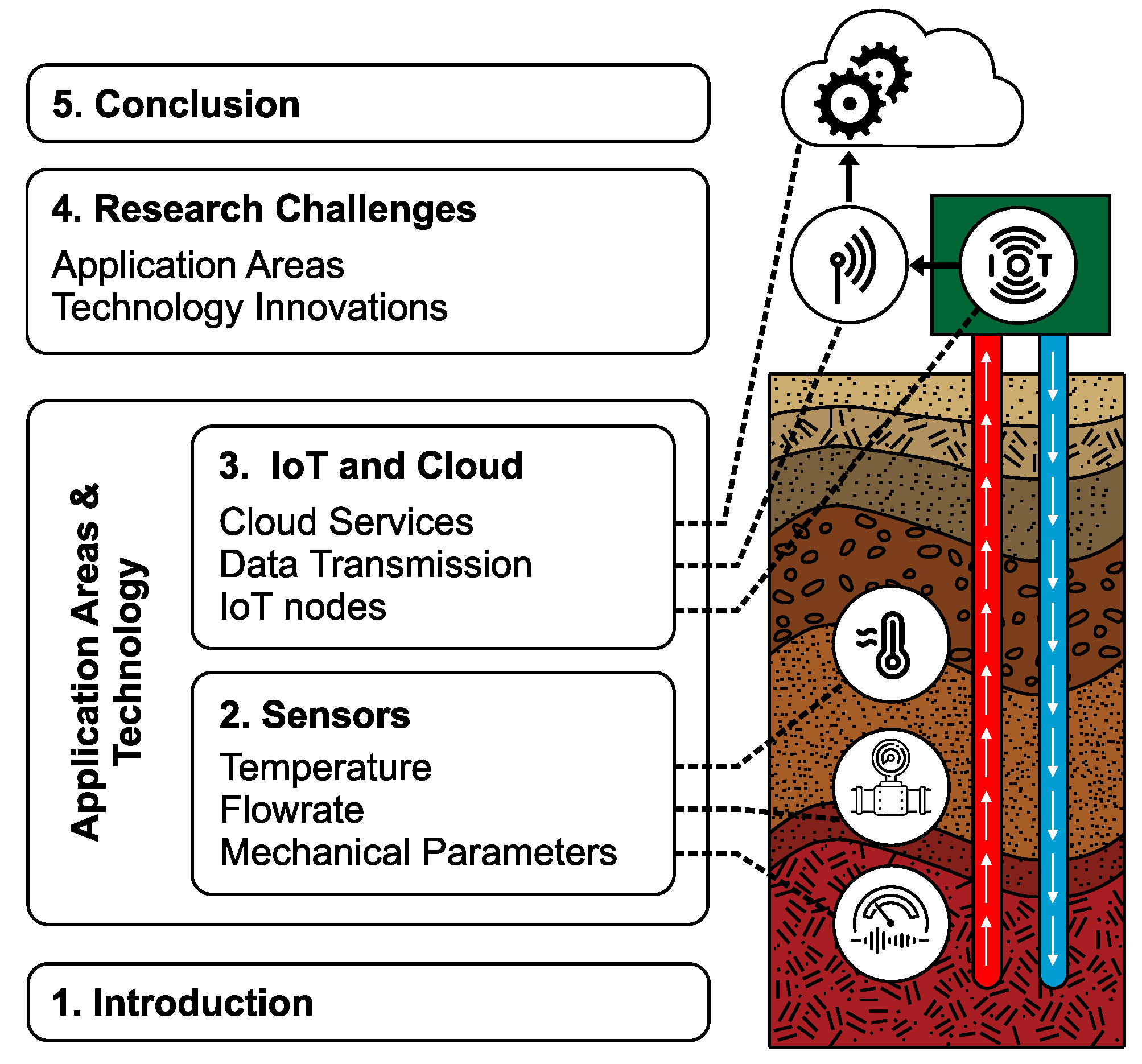
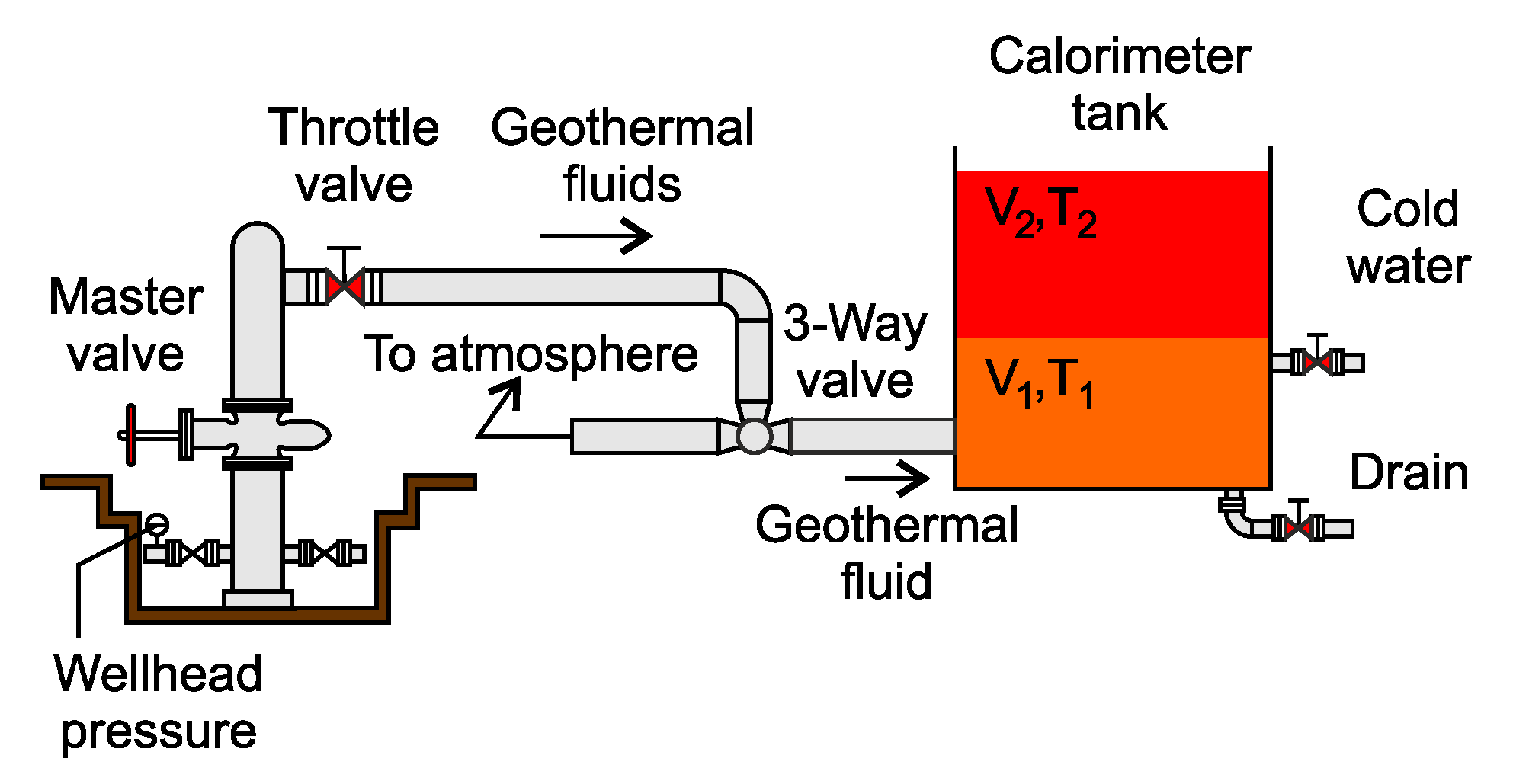

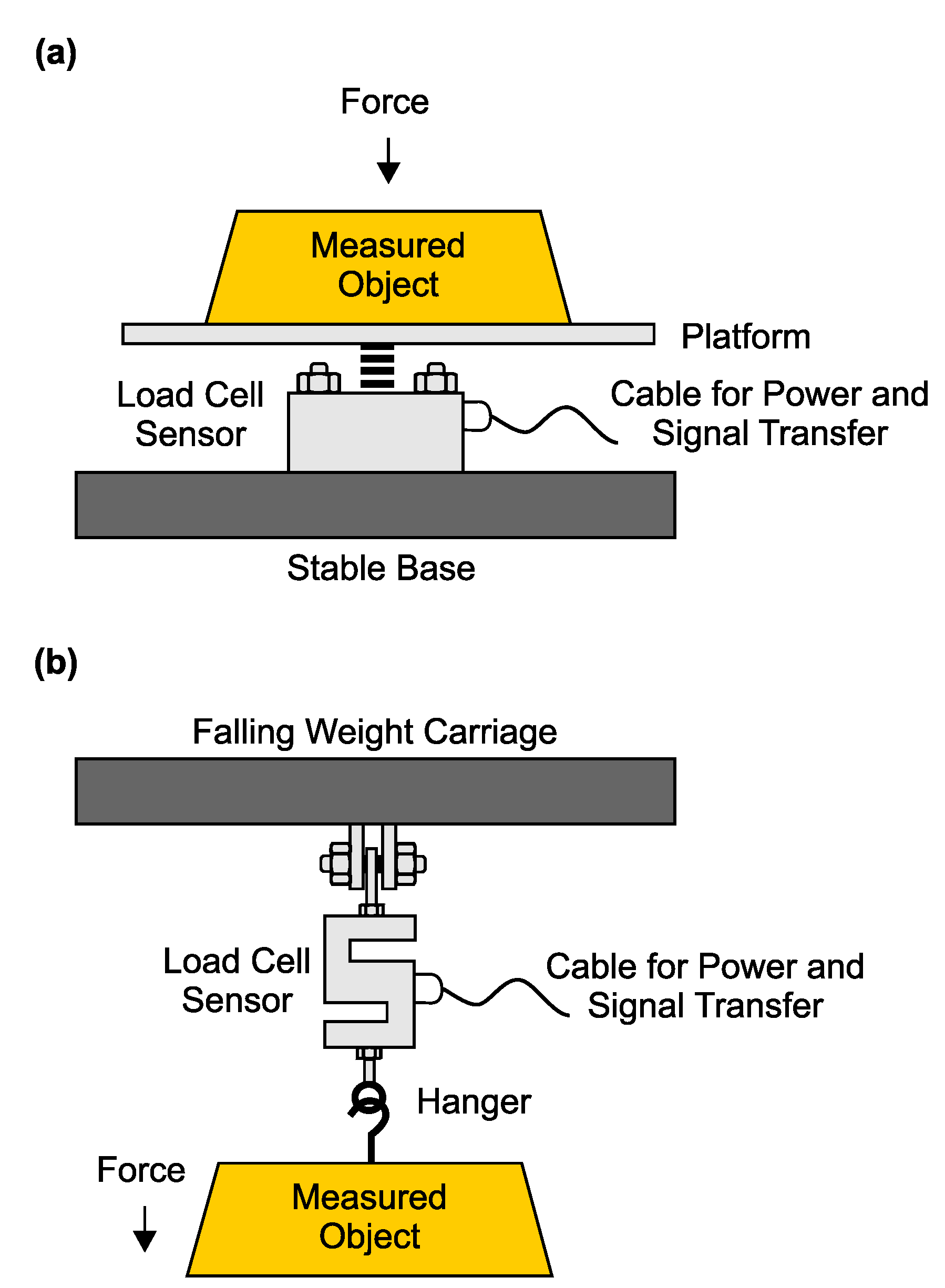
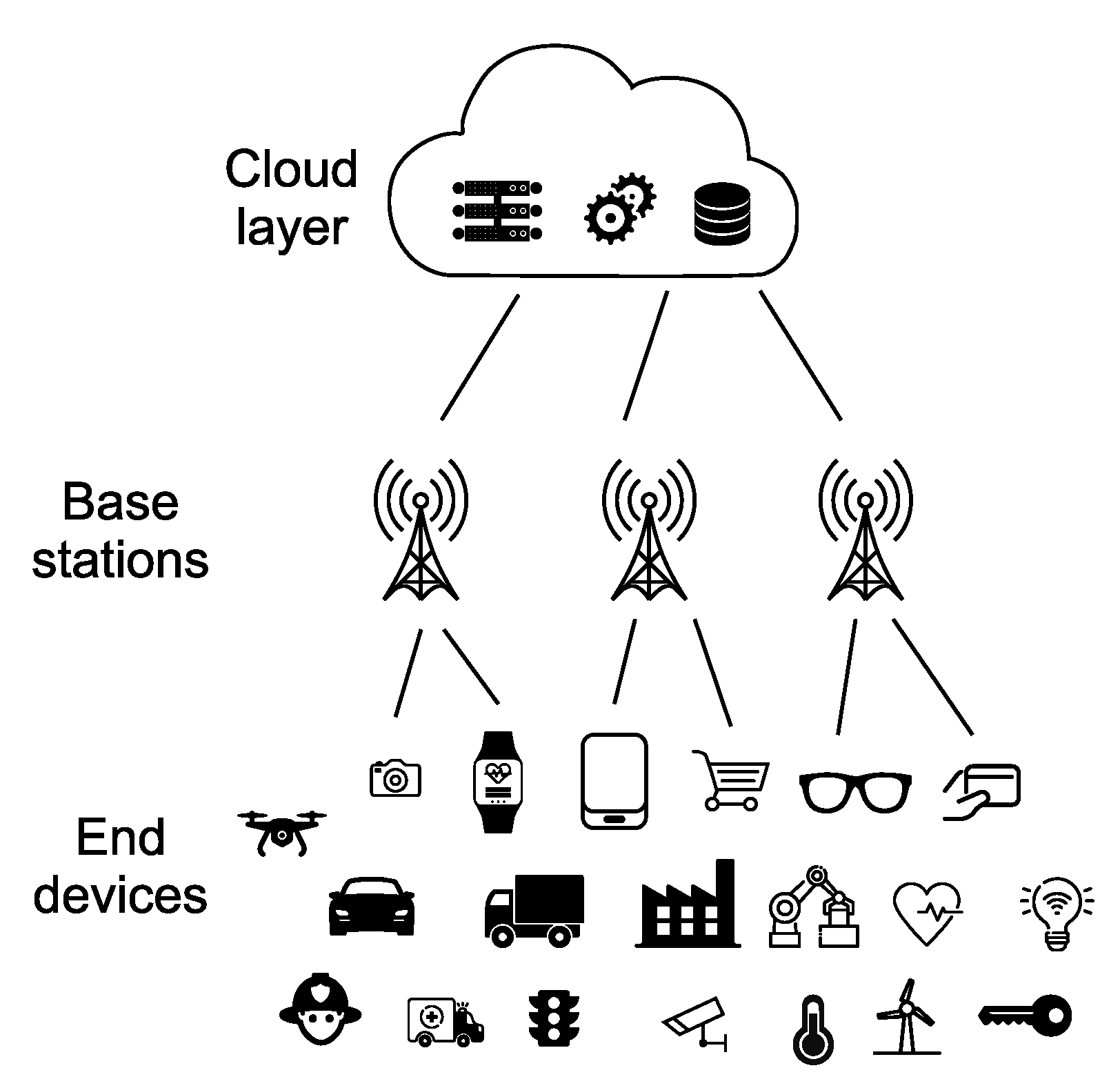
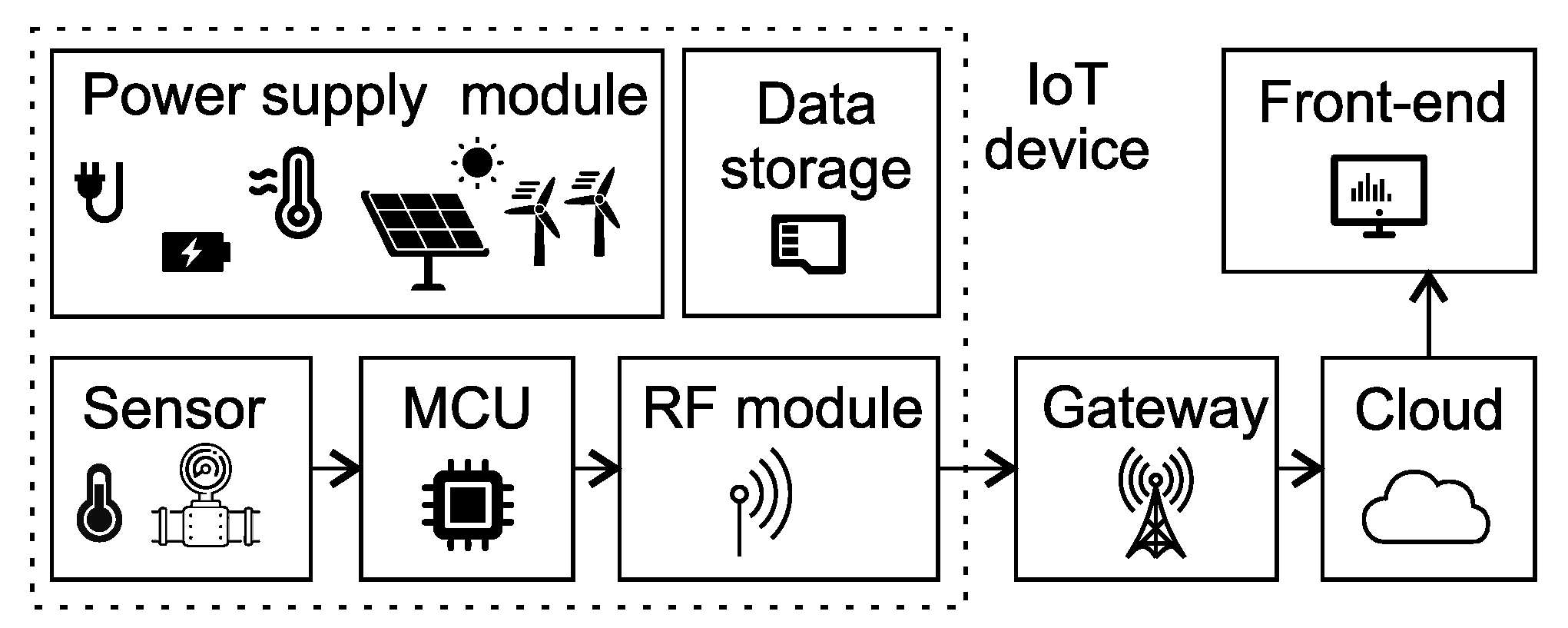
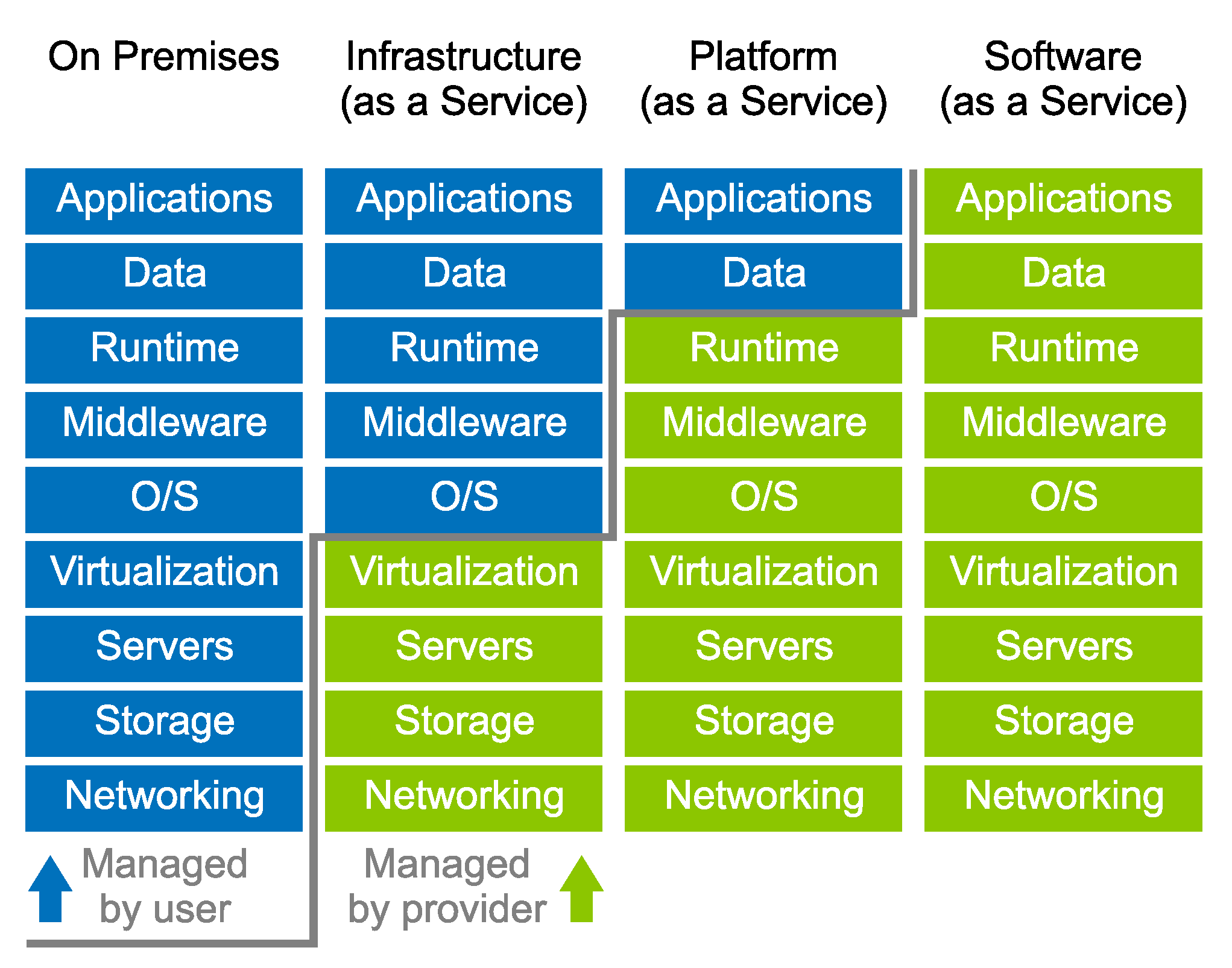
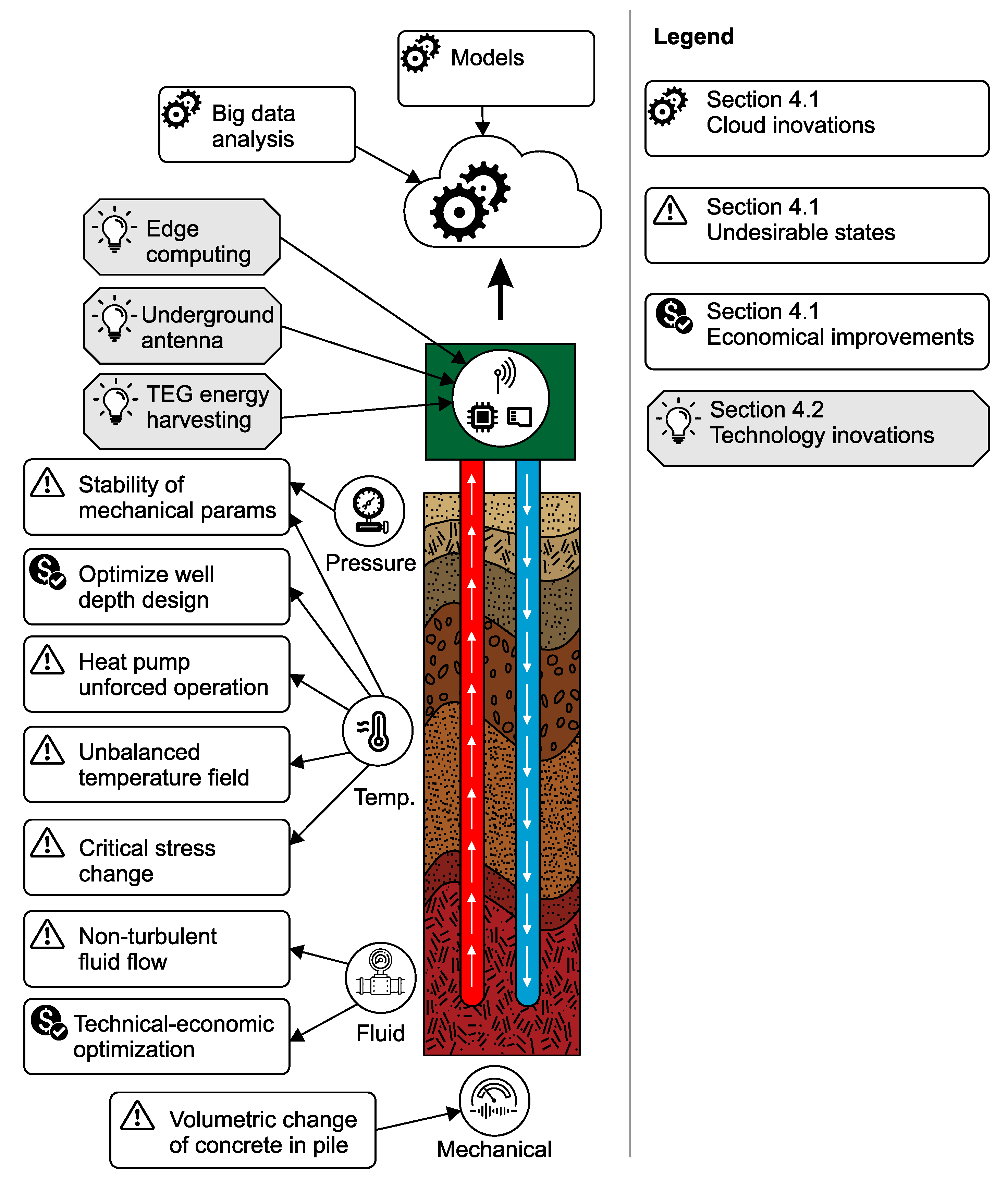
| Author, Source | Monitored Parameters | Geothermal Structure | Article Content | IoT |
|---|---|---|---|---|
| Aranzabal et al. [13] | Temperature | Vertical borehole heat exchanger | Comparison of methods | No |
| Sanjuan et al. [14] | Temperature and pH measurements | Downhole | Sensors and equipment dedicated to geothermal applications | No |
| Ukil et al. [15] | Temperature | Power plant device | Review of technology and applications | No |
| Helbig et al. [2] | Two-phase flow | Geothermal pipeline | Comparison of methods | No |
| Mubarok et al. [1] | Two-phase flow | Geothermal well | Comparison of methods | No |
| Yadav et al. [4] | Slope | Open-pit mine | Review of WSNs with IoT used for monitoring slopes | Yes |
| Muduli et al. [9] | Temperature, air humidity, gas analysis, etc. | Coal mine | Review of monitoring possibilities for underground coal mines based on WSNs | Yes |
| Ali et al. [7] | Leakage and sinkhole | Underground pipeline | Review of methods and WSNs for monitoring leakage and sinkholes | Yes |
| Author, Source | Geothermal Structure | Methodology |
|---|---|---|
| McDaniel et al. [16] | Geothermal exchange borefield | DTS |
| Reinsch et al. [17] | Geothermal well | DTS |
| Bense et al. [5] | Downhole | DTS |
| Martos et al. [18] | Borehole heat exchanger | Autonomous wireless sensor |
| Aranzabal et al. [13] | Borehole heat exchanger | Geoball and GEOsniff |
| Method | Real-Time | Out of Operation | Direct Contact | Application Location |
|---|---|---|---|---|
| Ultrasonic meter | Yes | No | No | Geothermal power plant [27], open Venturi channel [28] |
| Calorimeter | No | Yes | Yes | Geothermal well [29] |
| Sharp-edge orifice plate | Yes | No | Yes | Geothermal well [1,2] |
| Tracer dilution | No | No | Yes | Geothermal well [30,31] |
| Lip pressure | Yes | Yes | Yes | Geothermal well [32] |
| Venturi tube | Yes | No | Yes | Geothermal power plant [33], geothermal pipeline [34] |
| Coriolis flow meter | Yes | No | Yes | Open Venturi channel [28] |
| Compression load cells | Yes | No | No | Geothermal pipeline [35], geothermal well [35] |
| Separator with orifice plate and silencer | Yes | No | Yes | Geothermal well [1] |
| Parameter | Sensor Type | Application |
|---|---|---|
| Pressure [51] | Strain gauge | Geothermal well |
| Pressure [48] | Fibre-optic | Geothermal well and reservoir |
| Slope movement, deformation [4] | Tilt sensor | Borehole |
| Scale formation [3] | Fibre-optic | Geothermal brine |
| Formation of borehole breakouts [49] | Ultrasonic sensor | Borehole |
| Stress [52] | Vibrating wire sensor | Geothermal or oil drilling well |
| Author, Source | Power Supply Type | Application |
|---|---|---|
| Lin et al. [61] | AC power grid | AC power monitoring module |
| Grimsley et al. [10] | Primary battery | Environmental monitoring |
| Das et al. [67] | Solar panel | Air pollution monitoring |
| Civerchia et al. [62] | Battery | Industrial monitoring |
| Wang et al. [68] | Kinetic energy—vibration | Agricultural industry |
| Tran et al. [69] | Radio frequency | Healthcare, room temperature, tire pressure, implantable devices, environmental monitoring, air quality monitoring |
| Twaha et al. [70] | Thermoelectric generator | Industrial utilities, transportation tools, military devices, space applications, medical services |
| Roy et al. [71] | Wind | Environmental monitoring, agricultural applications |
| LoRaWAN | Sigfox | NB-IoT | |
|---|---|---|---|
| Range | 5–20 km | 10–40 km | 1–10 km |
| Band | Unlicensed ISM | Unlicensed ISM | Licensed LTE |
| MAC layer | ALOHA-based | ALOHA-based | LTE-based |
| Payload | 242 B [86] | 12 B (UL), 8 B (DL) | 1600 B |
| Authentication and encryption | AES-128 | No | LTE encryption |
| Adaptive data rate | Yes | No | No |
| Modulation | LoRa (CSS) | DBPSK, GFSK | QPSK |
| Transmission speed | 50 kbps | 100 bps | 200 kbps |
| Deployment model | Provider, private | Provider | Provider |
| Adaptive data rate | Yes | No | No |
| Topology | Star, mesh, P2P | Star | Star |
| Standardization | LoRa Alliance | Sigfox company with ETSI | 3GPP |
| Power consumption | Low | Low | High |
| Interference immunity | Very high | Very high | Low |
| AWS IoT | IBM | Azure IoT | GCP | |
|---|---|---|---|---|
| Connectivity | MQTT, HTTPS, LoRaWAN | HTTP, MQTT | MQTT, AMQP, HTTPS | MQTT, HTTP |
| Security | TLS | TLS | TLS | TLS |
| Data storage | MongoDB, Amazon DynamoDB | IBM cloud object/block/file storage | Azure storage | Google Cloud Storage, Cloud Bigtable, Cloud SQL |
| Microservices | yes | yes | yes | yes |
| SDK/Language | C++, Python, JavaScript, Java, Embedded C | .NET, Python, Java, NodeJS | .Net and UWP, Python Java, C, NodeJS | C++, Python, Java, NodeJS, Go |
| Author, Source | Application |
|---|---|
| Early warning systems | |
| Kim et. al. [105] | Real-time scour warning system for railway bridges using remote ambient vibration monitoring. |
| Dai et. al. [106] | IoT framework for electrical fire monitoring at ancient architectural complex. |
| Bassetti et. al. [107] | Edge computing early warning system for earthquakes. Local probes detect quakes. |
| Data compression | |
| Rivet et. al. [108] | Edge computing polynomial regression data compression method for environmental monitoring. |
| Debski et. al. [109] | Edge computing study of autonomous vehicles and robots concerning with online compression. |
| Factors | Telemetry Systems | IoT Devices |
|---|---|---|
| Ease of Installation and Maintenance | Complex, requiring specialized equipment and expertise | Relatively easy, designed for plug-and-play operation |
| Costs | Expensive, especially in remote locations | Relatively inexpensive, deployable in large numbers |
| Volume of Information | Limited data on a few parameters | Comprehensive data from multiple sensors |
| Transfer Rate Requirements | High transfer rate for real-time data transmission | Wireless data transmission, reduced transfer rate requirements |
| Environmental Conditions | Designed to withstand harsh conditions | Impact from temperature, humidity, and corrosion |
| Operational Range | Longer range, suitable for monitoring large areas or remote locations | Limited range |
| Device Replacement | Difficult, especially in remote locations | Easily replaced, plug-and-play operation |
| Undesirable State | Solution |
|---|---|
| Thermal imbalance | Monitoring of individual boreholes |
| Absence of turbulent fluid flow | Higher flow rate or pipes with spiral ribbing (to address low flow rates) |
| Unforced operation of the heat pump during cooling | Heat pump not operational during cooling |
| Critical stress change | Temperature monitoring of critical limits with adequate reduction of flow rate |
| Volumetric change in concrete in pile | Application of pressure cell monitoring at the head of the pile between the pile and concrete slab |
| Monitored Parameter | Monitoring Purpose |
|---|---|
| Flow rate at each borehole | Techno-economic optimization (selection of suitable pipe diameters and energy consumption) |
| Temperature at each borehole | Optimization of designs for well depth |
| Energy Harvesting Method | Application | Features |
|---|---|---|
| Thermoelectric generator | Underground IoT | Fixed to the current technology |
| Water pipeline energy harvesting | IoT sensors near pipes | Inside pipe |
| Solar and wind | IoT sensors located on the ground | External technology |
| Edge Computing Technique | Application |
|---|---|
| Metadata analysis | Early warning systems, hazardous state monitoring |
| Data compression | IoT monitoring |
Disclaimer/Publisher’s Note: The statements, opinions and data contained in all publications are solely those of the individual author(s) and contributor(s) and not of MDPI and/or the editor(s). MDPI and/or the editor(s) disclaim responsibility for any injury to people or property resulting from any ideas, methods, instructions or products referred to in the content. |
© 2023 by the authors. Licensee MDPI, Basel, Switzerland. This article is an open access article distributed under the terms and conditions of the Creative Commons Attribution (CC BY) license (https://creativecommons.org/licenses/by/4.0/).
Share and Cite
Prauzek, M.; Kucova, T.; Konecny, J.; Adamikova, M.; Gaiova, K.; Mikus, M.; Pospisil, P.; Andriukaitis, D.; Zilys, M.; Martinkauppi, B.; et al. IoT Sensor Challenges for Geothermal Energy Installations Monitoring: A Survey. Sensors 2023, 23, 5577. https://doi.org/10.3390/s23125577
Prauzek M, Kucova T, Konecny J, Adamikova M, Gaiova K, Mikus M, Pospisil P, Andriukaitis D, Zilys M, Martinkauppi B, et al. IoT Sensor Challenges for Geothermal Energy Installations Monitoring: A Survey. Sensors. 2023; 23(12):5577. https://doi.org/10.3390/s23125577
Chicago/Turabian StylePrauzek, Michal, Tereza Kucova, Jaromir Konecny, Monika Adamikova, Karolina Gaiova, Miroslav Mikus, Pavel Pospisil, Darius Andriukaitis, Mindaugas Zilys, Birgitta Martinkauppi, and et al. 2023. "IoT Sensor Challenges for Geothermal Energy Installations Monitoring: A Survey" Sensors 23, no. 12: 5577. https://doi.org/10.3390/s23125577
APA StylePrauzek, M., Kucova, T., Konecny, J., Adamikova, M., Gaiova, K., Mikus, M., Pospisil, P., Andriukaitis, D., Zilys, M., Martinkauppi, B., & Koziorek, J. (2023). IoT Sensor Challenges for Geothermal Energy Installations Monitoring: A Survey. Sensors, 23(12), 5577. https://doi.org/10.3390/s23125577









